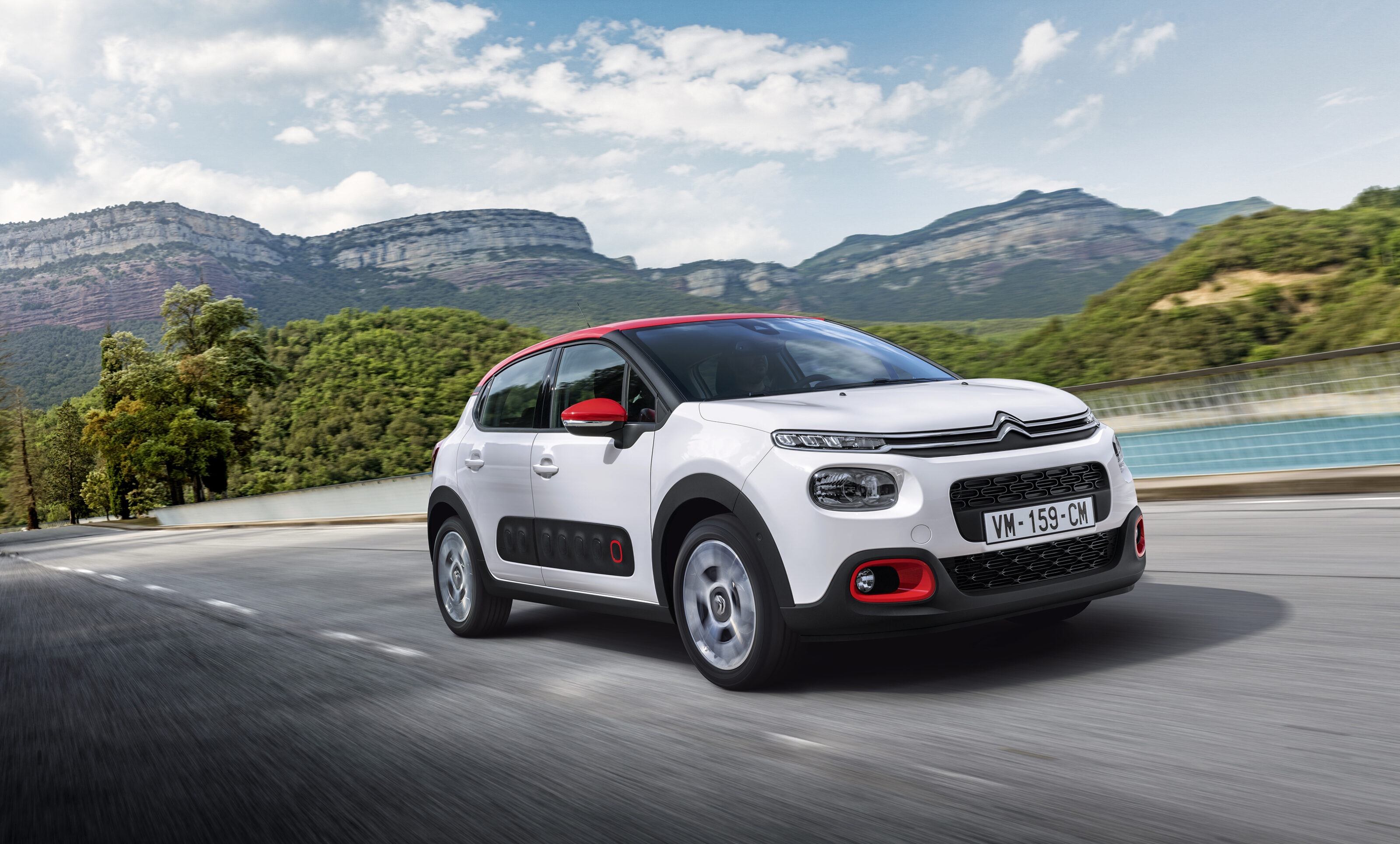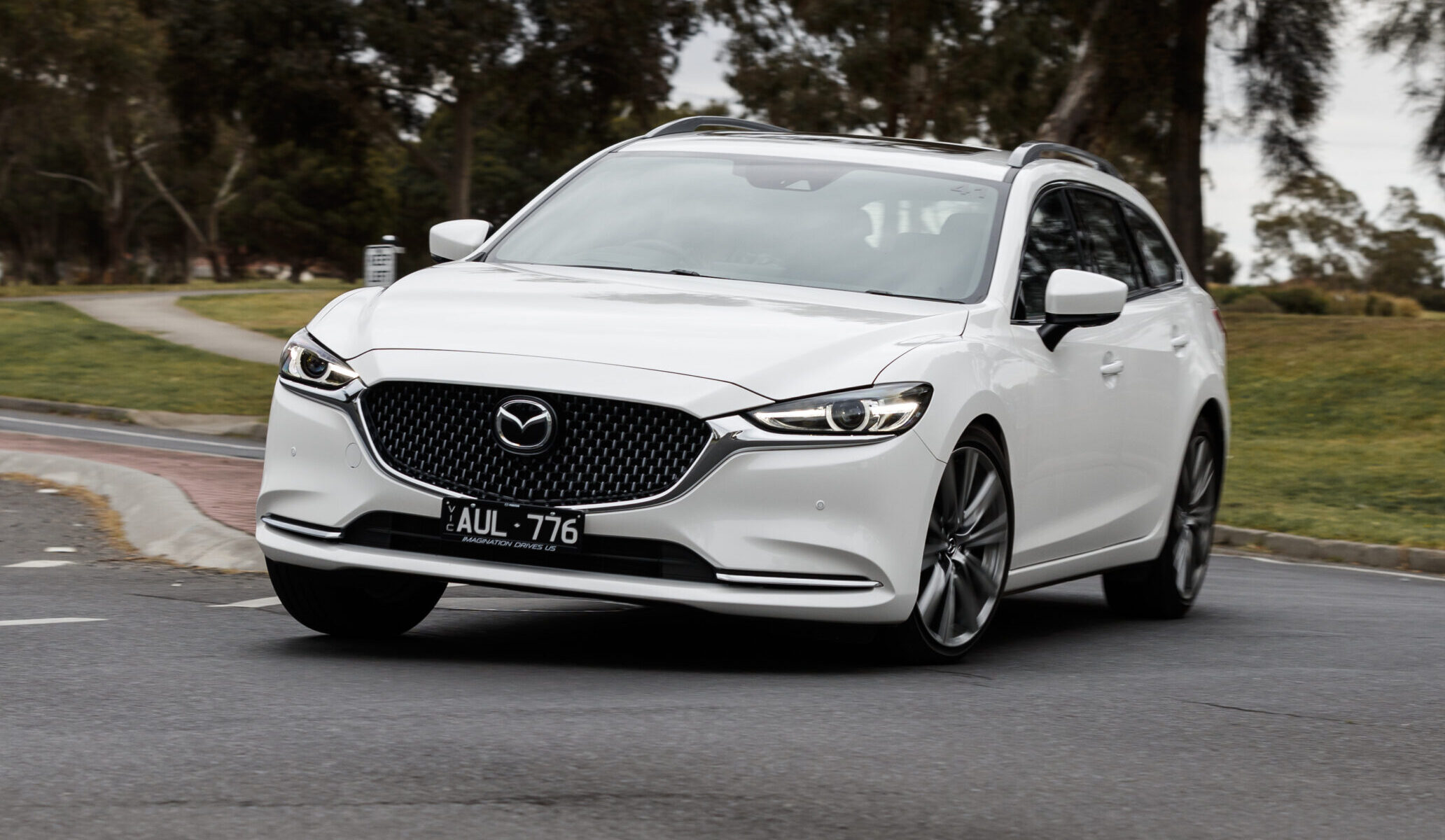It’s a bittersweet day as we belt Holden’s greatest-ever V8 sports sedan from Fishermans Bend back to its birthplace at Lang Lang. Spoiler alert – this may end in tears…
THERE’S a problem with this car; a huge one. Only days before we collect this VF Series II – the final Commodore engineered and built in Australia – General Motors’ VP Stefan Jacoby dropped a bombshell. Not only will this be the final Australian-built car – something we already knew – but Jacoby confirmed that when the VFII V8 dies in 2017, the Chevrolet SS goes with it, thus ending any hope that the Americans might pick up the four-door V8 rear-drive baton and develop one for us as well.
There’s no chance of a John Farnham-style comeback for the Commodore V8. So if you want an affordable rear-drive V8 sports sedan, ladies and gentlemen, this is it.
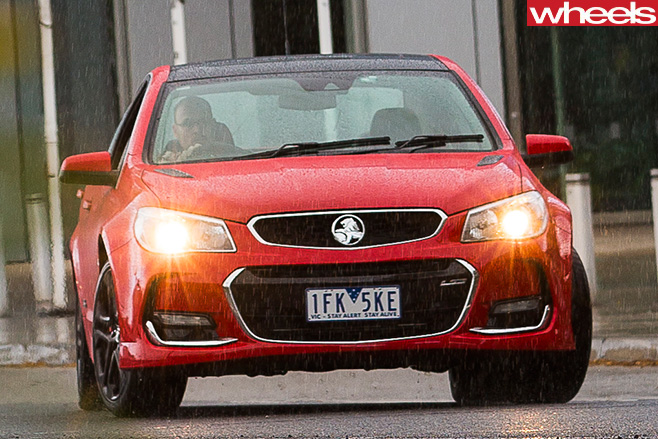
Today’s Commodore shows its depth of talent and engineering better than ever. This is a car that has been built to hammer over tram tracks in Melbourne, tear up the Adelaide Hills, and have its big V8 reverberate between skyscrapers at 2am in Sydney’s CBD.
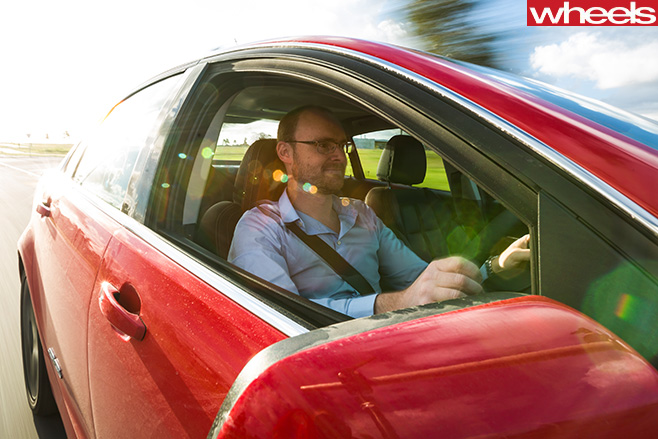
Heart starter
That demand for the V8 Commodore has remained so robust over the last decade makes this VFII SS-V Redline a beacon. We’re driving it from Holden’s HQ in Salmon Street, Port Melbourne, across Victoria and south-east to Holden’s Lang Lang proving ground, the place where the dozens of Holden models have been developed over decades – more than 3.13 million of them wearing Commodore badges.
The VFII Redline is one of those cars we willingly wipe the crust from our morning eyes for. After exiting Holden’s HQ in the spotlessly prepared sedan, our first priority is coffee. That’s where it begins.
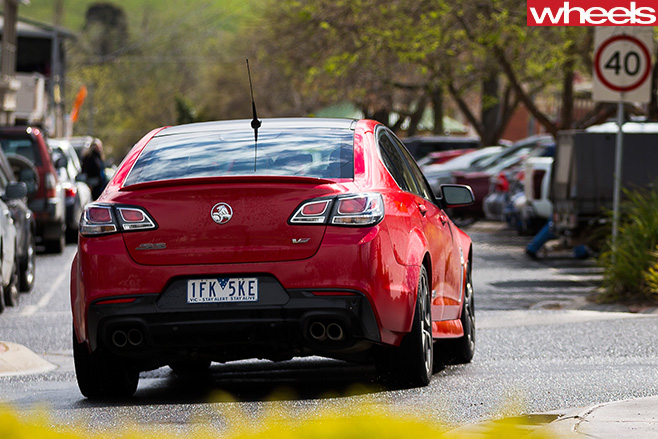
The visuals that caught the coffee-drinker are subtle, but strong. Take that front end, one that’s been carefully massaged by Holden designers Richard Ferlazzo and Peter Hughes. It’s clearly still a VF, but there are wider apertures, a middle section that gulps more air, and side ducts that feed more through to slots in the wheelarches. They’re surrounded by lashings of chrome, which thankfully isn’t overdone but carefully portioned across the nose, contrasting with the black upper and lower front grilles.
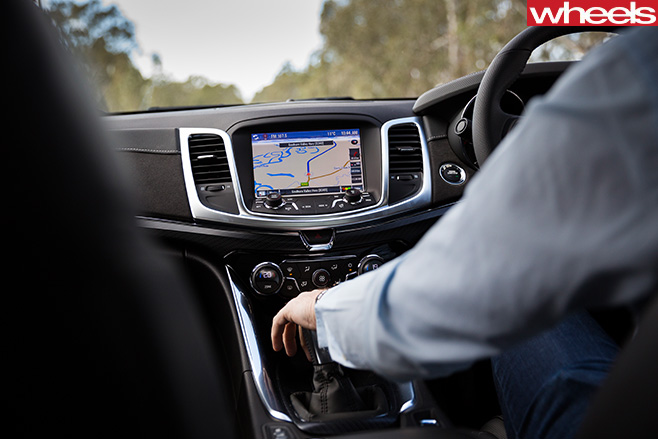
Subtle, too, are the engine-bay vents. They rest on VFII’s bonnet creases, and if you look closely, they actually work. The first three slots are wider than the final two, letting air out while keeping water and other intruders away from what lies beneath. And you know what’s under bonnet via the badge in the gloss black bumper insert up front: the 6.2-litre LS3 V8.

C’mon, feed the noise
Up the Hume, the SS proves comfy with plenty of space in the cabin, which is unchanged for this final edition, and its long legs are shown by the V8 ticking over at a mere 1600rpm at 100km/h in sixth gear. We turn off at Broadford and onto an undulating, winding section that’s made up of sweepers and the odd hairpin.

It really does sound like a race V8, and its song has depth and variety. Squeeze gently at low revs and it responds with a warm burble, but at full noise it’s a roar layered with a shriek that’s boisterous, delicious and addictive.
The VFII’s acceleration is rapid, but it’s not neck-snapping. You’re clearly in control, the composure and demeanour of the SS explosive yet predictable. You can feel the road surface through the wheel, yet the chassis won’t bump or skip off line and it’s more a chatter of what we’re steamrolling rather than a panicked shout of the road below.
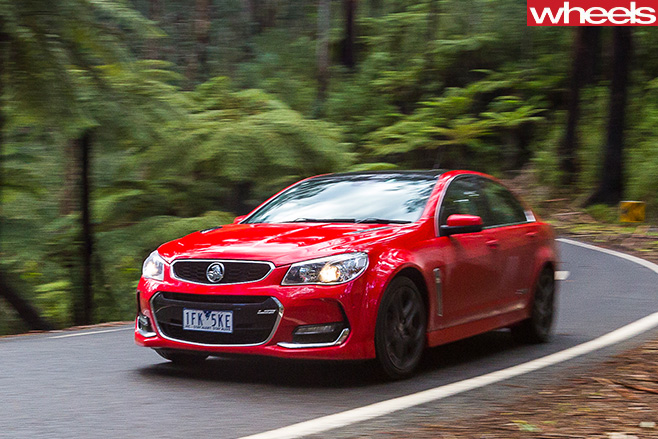
Aussie greatness
As a driver, you’re part of this car: a crucial part of the circuitry that gets that wondrous V8 through the transmission and out to the rear wheels, anchored by supreme front-end grip and stellar Brembo brakes. The roads we’re on are wet, dry, and at one point showered in hail, yet the Redline has such capable road-holding that we’re hardly adjusting our attacking style for the slippery stuff. And the extra revs of new 6.2 mean that this seemingly minor upgrade has, in fact, elevated the SS-V Redline to true Aussie sports-sedan greatness.
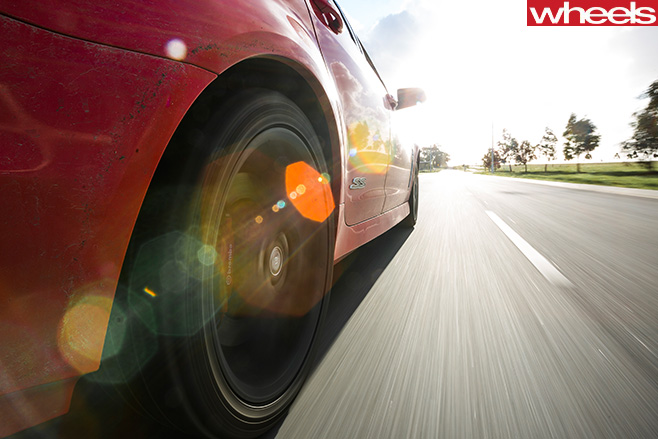
That means that Ross, who we find pondering the SS with a mate as we leave the pie shop in Yea, has it on his shopping list. “I had a VT SS,” he says, when he realises that we’re happy to show him Holden’s latest and greatest sports sedan. “Can I have a look at the engine?” he asks, so we pop that vented bonnet. I show him the plain engine cover, and point out the sound enhancer that has bathed the cabin in V8 richness all morning. “Why do you need a sound enhancer when you’ve got a V8!” he laughs. Regardless, it’s on his 2016 shopping list.
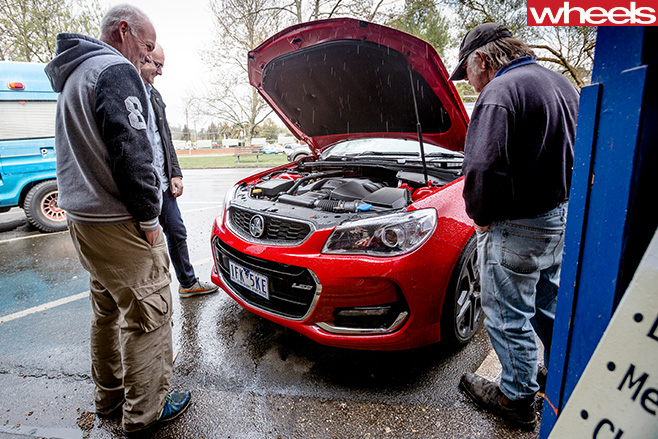
Last drinks
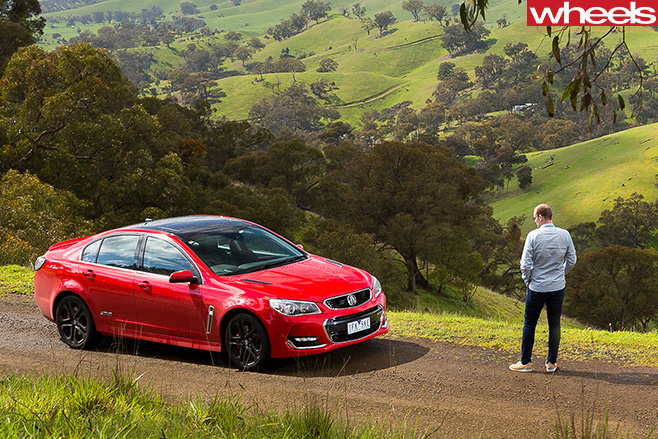
Jacoby reckons that post-Aussie production, would-be V8 Commodore buyers will get the same buzz from “another technology”. No we won’t, Mr Jacoby. That’s like replacing Cold Chisel with Nickelback, or Porsche’s flat six with a V6. It’s just not the same. And it’s proof that the rest of the world doesn’t get why the V8 has its place in the Aussie motoring psyche.
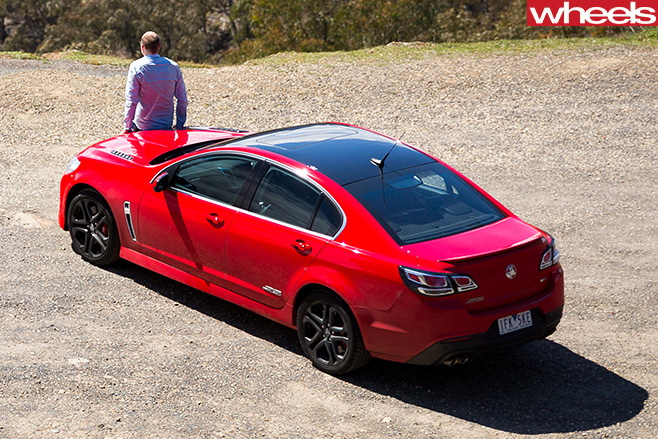
Someone at Holden will soon press the last Commodore bonnet closed, the last batch of paint will be sprayed, the final steering wheel will have a badge placed on it. The hard hats will be hung up, overalls no longer needed. There will be farewell beers and reminiscing about what this group of people has accomplished. Then, one person will have to switch off the lights for the last time.
That moment will be in 2017. And that will spell the end of the greatest-value sports sedan Australia has ever produced, with no replacement in sight. That’s the problem with this car. And why Stefan Jacoby isn’t welcome at my next barbecue.
Raising (and stretching) the bar
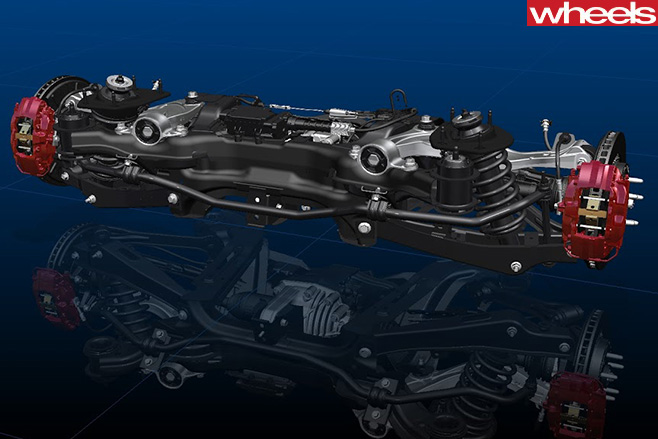
The old 260kW 6.0-litre auto felt docile, like it’s a gear too tall, without the punch to subtly kick the tail out to dissolve understeer. The 304kW 6.2-litre, on the other hand, felt like it had been given a shot of adrenalin straight to the heart. Its combination of more power, shorter gearing and a greater rev range transforms the car’s feeling of liveliness. And the MY16 suspension changes, particularly at the rear end, combine with the grunt increase to really raise the Redline’s dynamics.
Out on the road, the difference in suspension tune is even more apparent. Fitting sliding Brembo calipers to the Redline’s rear brake set-up enabled fitment of a new rear anti-roll half a metre wider, meaning the Redline could run softer rear springs to achieve a far more sophisticated ride/handling mix.
Where the previous anti-roll bar (still fitted to the FE2-suspended SV6, SS and SS-V) was as stiff as possible, mounting the new bar close to the centre of the rear wheels introduces a much greater degree of subtlety. Holden sorted the Redline sedan first, then tried to replicate the improvement in Sportwagon and Ute. As a result, they share the same front struts but get unique rear dampers.
You can instantly feel the more nuanced balance of the Redline’s chassis. It squats more readily onto its outside rear wheel, which really points the nose into a corner, yet it’s also more supple, allowing it to cop mid-corner bumps effortlessly.
Where the MY15 FE3 tune felt quite firm, yet still very effective at tackling corners with balanced conviction, the MY16 tune with new rear anti-roll bar adds a tangible layer of extra polish to the way the Redline drives. It’s without a doubt the best-handling Holden-badged Commodore ever, by some margin.
By Nathan Ponchard
V-max
PLANNING a trip to the Territory? The new VF II SS-V Redline is speed-limited to 240km/h as a manual, or 10km/h shy of many European cars. SS-Vs fitted with the six-speed auto top out at 230km/h. The difference is due to the auto’s use in the Sportwagon (which is not available as a manual, despite those within Holden looking for a company car with more attitude). Without the speed limiter fitted, a VFII sedan should nudge 280km/h. Given we clocked 263 in a VY Commodore SV8 in 2002, you’d think so!
Doctor Dave’s legacy: the ‘Baillie’ tip
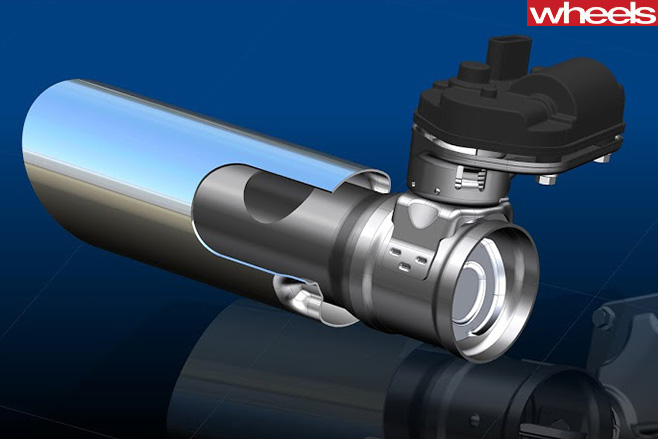
The engineers he worked with will never forget his efforts and his commitment, though – nor how well he fitted into the Holden team. And they want customers to remember the legacy Baillie had on their cars.
The exhaust tip he engineered for the VF Series II is now known as the Baillie Tip, and in true Aussie style, it’s a relatively simple concept – drilling a hole in the side of the exhaust tip to direct some of the noise up towards the boot floor. It then reverberates the sound throughout the cabin, effectively amplifying the V8’s roar under throttle.
“The guy was a genius, it’s a tragedy that we lost him,” says Holden chief engineer Andrew Holmes. “This is a little bit of genius … and it’s astounding how much difference it makes.”
His work, though, is a large part of the reason the Commodore V8 VF Series II sounds the way it does.
It could also be used on various General Motors products, with Holden lodging a patent to protect the clever engineering solution.
Holden Commodore SS-V Redline Engine: 6162cc V8 (90°), ohv, 16v Max power: 304kW @ 6000rpm Max torque: 570Nm @ 4400rpm Transmission: 6-speed manual Weight: 1775kg (estimated) 0-100km/h: 4.9sec (claimed) 0-400m: 13.0sec (claimed) Fuel economy: 12.9L/100km Price: $53,990 On sale: Now



